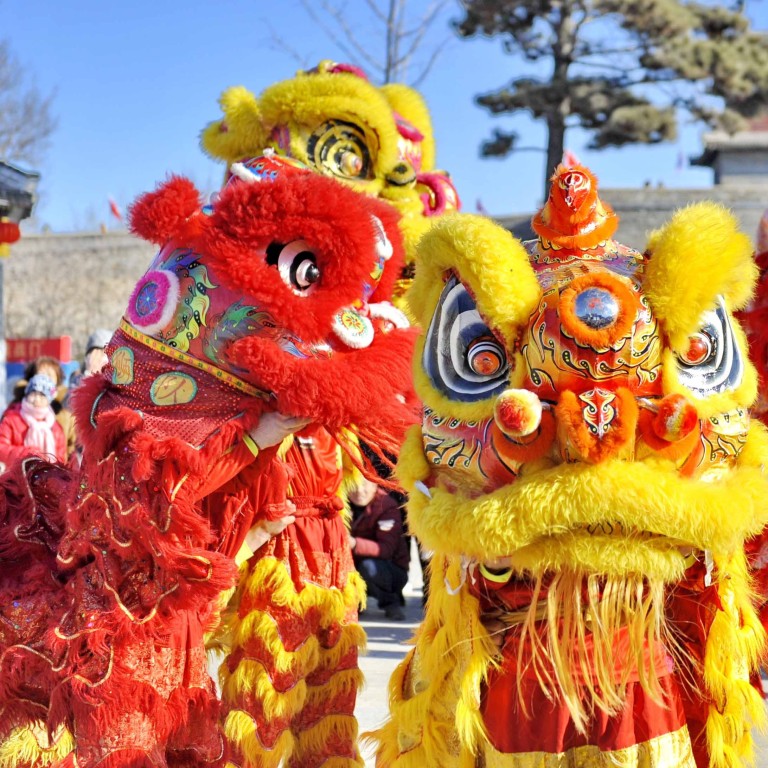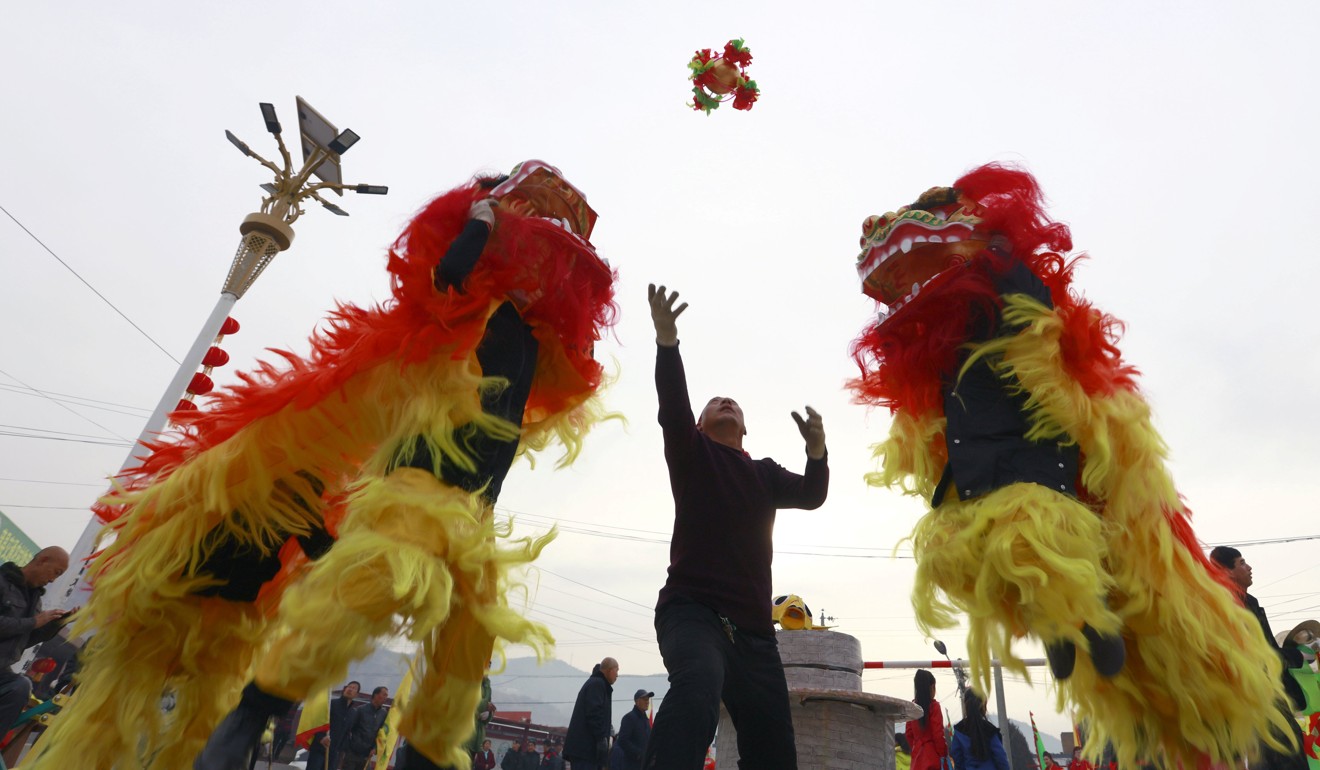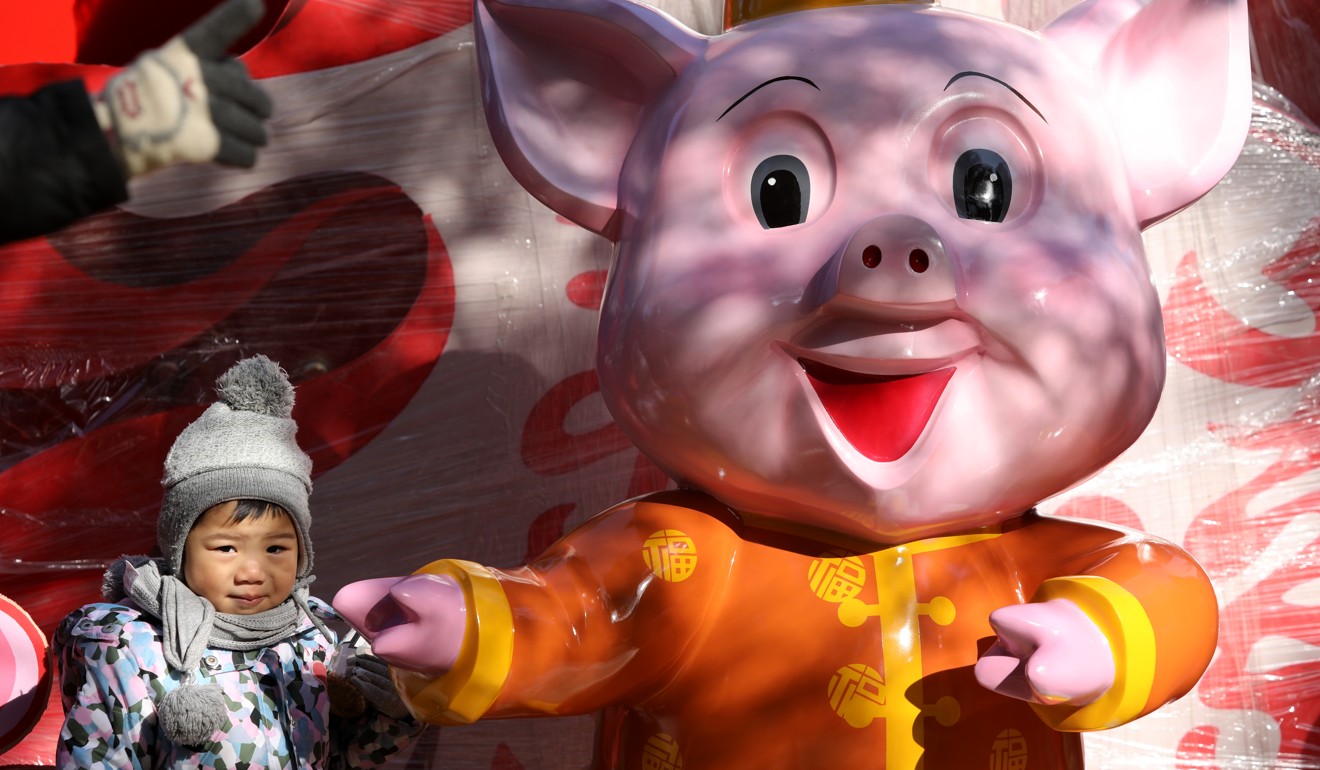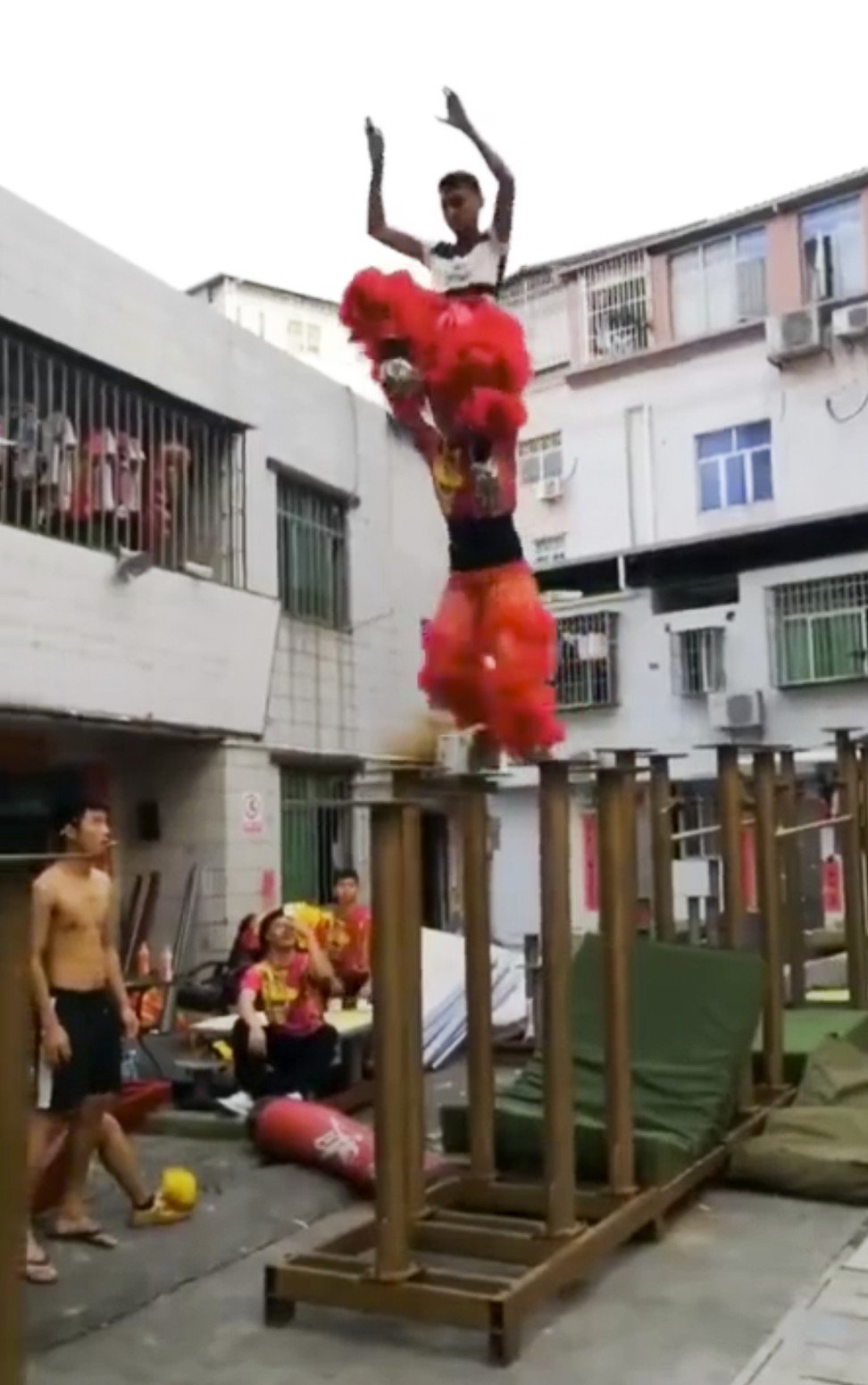
The lopsided fortunes of China’s ancient lion dance: thriving in the south but struggling in the north
- Public’s interest in the ancient art spiked when video of two performers working on routines went viral on social media
- A focus on family and heritage is driving its preservation in southern China
When the sounds of a drum, cymbals and gongs pierce the air in Foshan, a city in southeast China, local children know the lion dancers are performing.
Excitedly, they flood into the streets to catch a glimpse of the performers in the lion costume wagging the lion’s head and tail and climbing up and down poles as high as 20 metres (60 feet).
Li Zhihao was one of these children some 20 years ago. For as long as he could remember, the lion dance had been a part of life in the city in Guangdong province.
“Whenever people celebrated holidays, or when new businesses opened, lion dancing troupes were hired to perform on the streets,” said Li, a coach and performer with the Wong Fei-hung Lion Dance team in Foshan.

But while performances of this traditional art can be viewed during Lunar New Year and other Chinese cultural and religious festivals, the exuberance it inspires in Foshan and other southern cities is not shared to the north. The tradition tends to be better preserved in southern China because of the region’s strong focus on family and heritage.
Local governments and grass roots groups have launched efforts to revive the tradition in recent years.
The public’s interest in the lion dance suddenly spiked last week, when a video of two performers practicing their routines went viral on Chinese social media.
In the video, the person who would have played the lion’s hind legs – who, like his colleague, was not in costume – lifted up the person in front by the waist, to help him stand on a pole. The rear-end player then leapt up onto the pole – a graceful move that created the impression he was flying.
Internet users posted that they were astounded at the dancers’ skills and began to talk about whether succeeding generations would carry on the tradition.
It is unclear how the lion dance began, many years ago. Historians generally believe it is rooted in the late Han dynasty (206BC-AD220), when lions from Central Asia were brought to China’s emperor as gifts. By the Tang dynasty (618-907), lion dancing was regularly performed at the imperial court.
Although the tradition goes back hundreds of years, it has evolved. The north’s version of the dance uses a mascot that resembles a real lion, an element based on those imperial court performances of years ago.
In the south, including in Foshan, where the dance is believed to have originated, the lions are more cartoonish and have exaggerated facial and body expressions.
Li Zhihao’s Wong Fei-hung troupe performs the dance three times a day in Foshan at the institution from which it takes its name – the Wong Fei-hung Lion Dance Martial Arts Museum, which celebrates the life and times of the Qing dynasty (1644-1911) martial artist, doctor and folk hero, Wong Fei-hung.
Li explained the mythology behind the dance’s emergence in southern China.
“Once, a vast epidemic took place in one of Foshan’s towns, affecting many villagers,” Li said. “Then all of a sudden, a magical beast like a unicorn appeared, driving the epidemic away and saved the people. Ever since, people have been making lion-like figures and using them in dances.”
There is no doubt the lion dance tradition is flourishing in Foshan. The dancers perform during holidays, especially around Lunar New Year, and can be hired to perform at celebrations such as the grand openings of businesses.
Holiday dismay for hundreds as travel agency folds without warning
On a recent Saturday morning, Li and his teammates put on a performance at the Wong Fei-hung museum.
Spectators – including families with both their eldest and youngest members in tow – circled the courtyard where the dance took place. People clapped and cheered as the lions moved around the performance area and interacted with the crowd.
As the performers made the lions blink and shake their heads by manipulating poles that were positioned along the lions’ length, children shrieked with joy. The bolder ones reached out to stroke the fur of the yellow and gold beasts.

Some adults put 20-yuan bills (worth about US$3 each) into the lions’ mouths. The money was taken to a director standing in the centre of the circle who in turn gave the donor back a red sachet for good luck in the year to come.
Then, as the drums suddenly started rolling, the show picked up its pace. A lion circled back to the centre and clambered up a pole.
It looked around warily, as if it were frightened by the height, then stepped forward, hesitantly. The crowd gasped as the lion appeared to miss the pole and started to tumble to the ground.
But it saved itself just in time, grabbing the pole with its front paws, while its hind legs dangled in mid-air. The crowd heartily applauded the entertaining show.
Up north, the lion dance enjoys a less robust popularity. Some practitioners fear no one will continue the tradition, according to media reports.
Wang Xin, who directs a local dance troupe in Xushui, a district in Hebei province, told China News Service that many people have decided against learning the lion dance because of the time it takes to practice and master the routines, the poor pay and the dangers in performing it.

Although the Ministry of Culture named the northern-style lion dance a national cultural heritage item in 2006, just 70 people in the area know how to perform it and they are getting older, Wang was quoted.
“If nobody learns this traditional art, we are about to go extinct,” he said.
Finding people who want to keep the tradition going – and believe in its viability – is less of an issue in the south, especially in the Guangdong area.
Li took up lion dancing in college, where it was classified as a major “traditional sport”. He never worried about finding a job.
“Lion and dragon dances are in the performance industry, and that industry will never fall, as long as someone still wants to watch,” he said.
His teams include young children who have been sent by area villages to learn the dance on weekends or during their winter break, so they can perform it at home over the holidays.

Ge Guozheng, a physical education professor at Nanjing University of Science and Technology and founder of the school’s dragon and lion dance club, said the differing issues reflect the lion dance’s “regional culture”.
“More people in Guangdong immigrate abroad,” he said. “In a foreign environment, they needed a connection, a group to stay in to make sure they are not bullied.”
The dragon dance is similar to lion dancing in that dancers manipulate a figure of a dragon using poles positioned at regular intervals along the length of the dragon.
With the local government’s support, more emphasis has been placed in recent years on preserving dragon and lion dances in China, Ge said. He started the club in 2000 while he was in university, recruiting other students to learn the dances in their spare time, and compete in national contests.
He said he hoped to see the art revived so that its popularity between the regions would once again be balanced.
“There are hundreds of clubs around the country right now,” Ge said. “Universities, clubs, grass-roots organisations – we are all pouring our resources in together to develop this tradition in our own regions.”

.jpg?itok=H5_PTCSf&v=1700020945)
